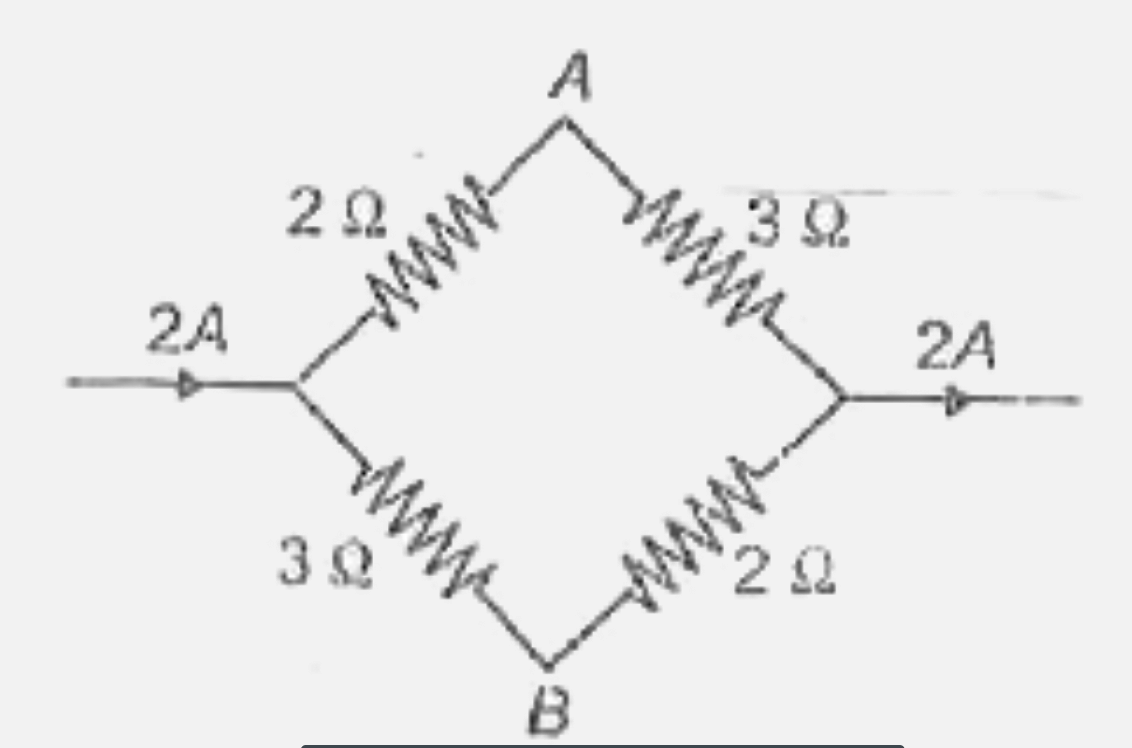What is VA−VB in the arrangement shown in.What is the condition such that VA−VB=0
Video Solution
Text Solution
Let the charge be as shown in. We know that capacitors in series have the same charge. Considering the loop containing C1,C2 and E, we get

qC1+qC2−E=0
or q=E[C1C2C1+C2]
from the loop containting C3,C4, and E, we get
q'C3+q'C4−E=0 or q'=E[C3C4C3+C4]
Now
VA−VB=qC2−q'C4=E[C1C1+C2−C3C3+C4]
=E[C1C4−C3C2(C1+C2)(C3+C4)]
For VA−VB=0,C1C4=C2C3=0. If (C1/C2)=(C3/C4), the potential difference across A and B will be zero . This statement is very important is capacitor circuit solving. This type of the situation is callede balacned Wheatstone bridge.
|
Updated on:21/07/2023
Topper's Solved these Questions
- BOOK - CENGAGE PHYSICSCHAPTER - CAPACITOR AND CAPACITANCEEXERCISE - Solved Examples10videos
CAPACITOR AND CAPACITANCE
- BOOK - CENGAGE PHYSICSCHAPTER - CAPACITOR AND CAPACITANCEEXERCISE - Exercise 4.113videos
CAPACITOR AND CAPACITANCE
- BOOK - CENGAGE PHYSICSCHAPTER - ATOMSEXERCISE - QUESTION BANK40videos
ATOMS
- BOOK - CENGAGE PHYSICSCHAPTER - CENGAGE PHYSICS DPPEXERCISE - subjective type51videos
CENGAGE PHYSICS DPP
Similar Questions
Knowledge Check
- Question 1 - Select One
Find VA−VB in steady state
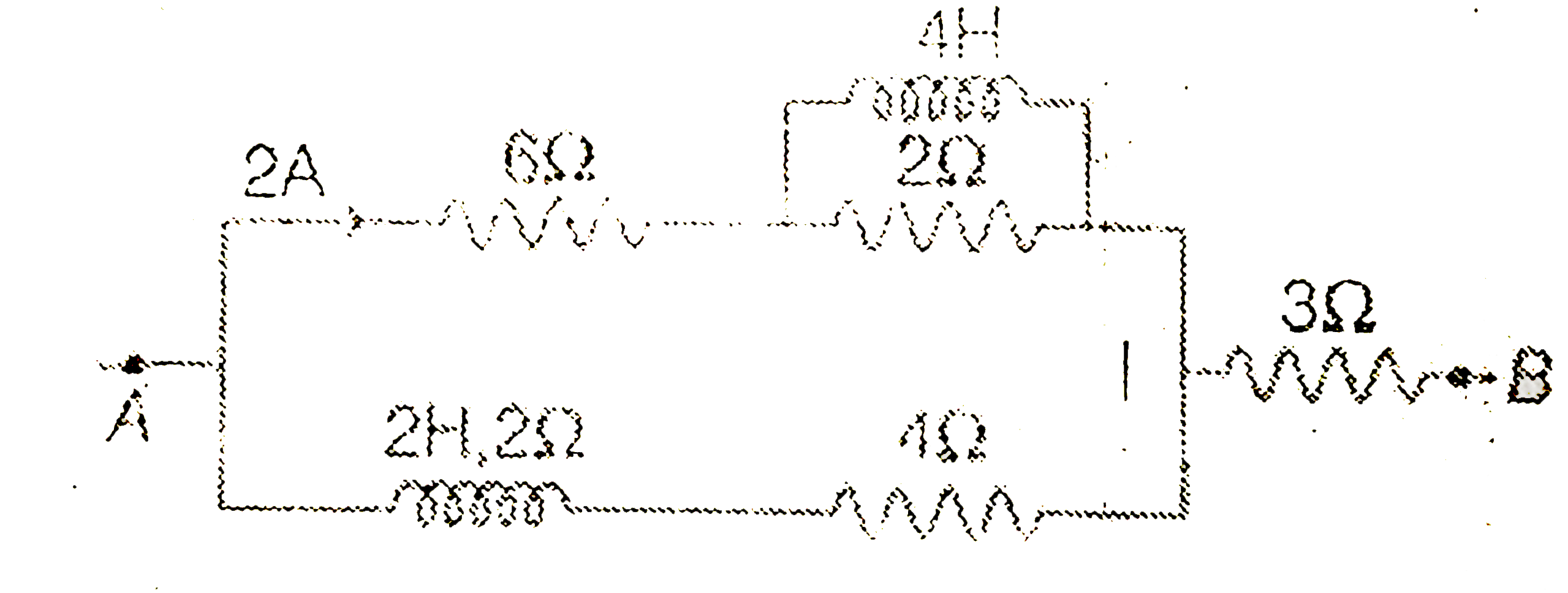 A8VB16VC24VDnone of the above
A8VB16VC24VDnone of the above - Question 2 - Select One
In the arrangement shown in figure the ratio of velocity V1&V2 of block (1)&(2) is
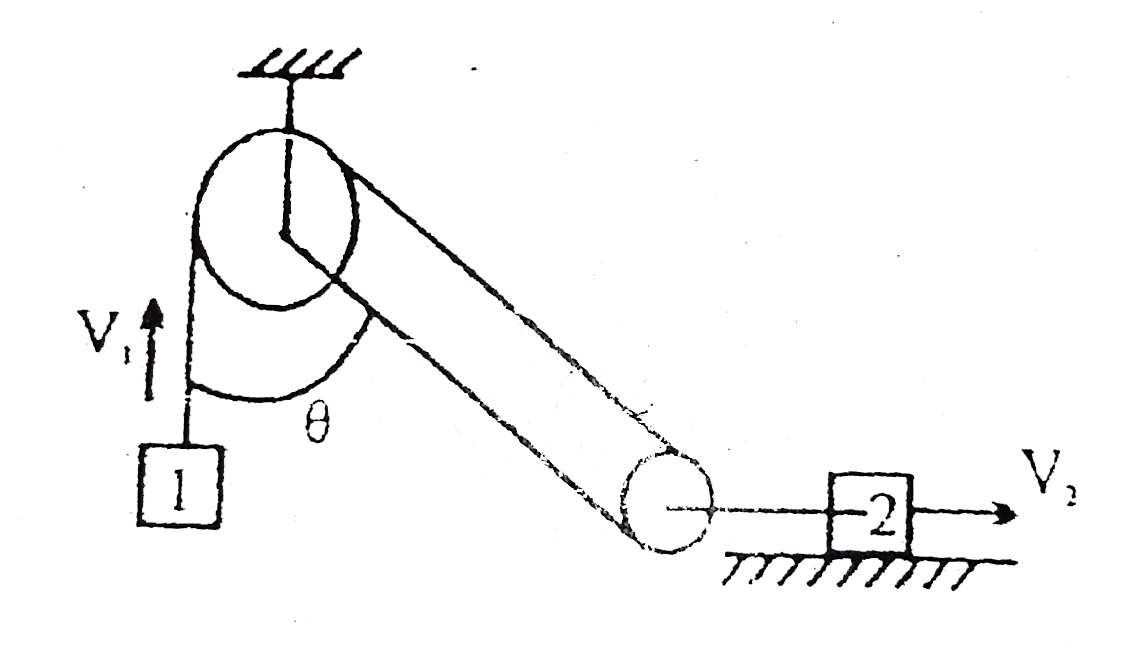 AV1V2=2cotθBV1V2=sinθ2CV1V2=2sinθDnone
AV1V2=2cotθBV1V2=sinθ2CV1V2=2sinθDnone - Question 3 - Select One
In the circuit shown, what is the potential difference VPQ?
 A+3VB+2VC−2VDnone
A+3VB+2VC−2VDnone
Potential difference VB−VA in the network shown is
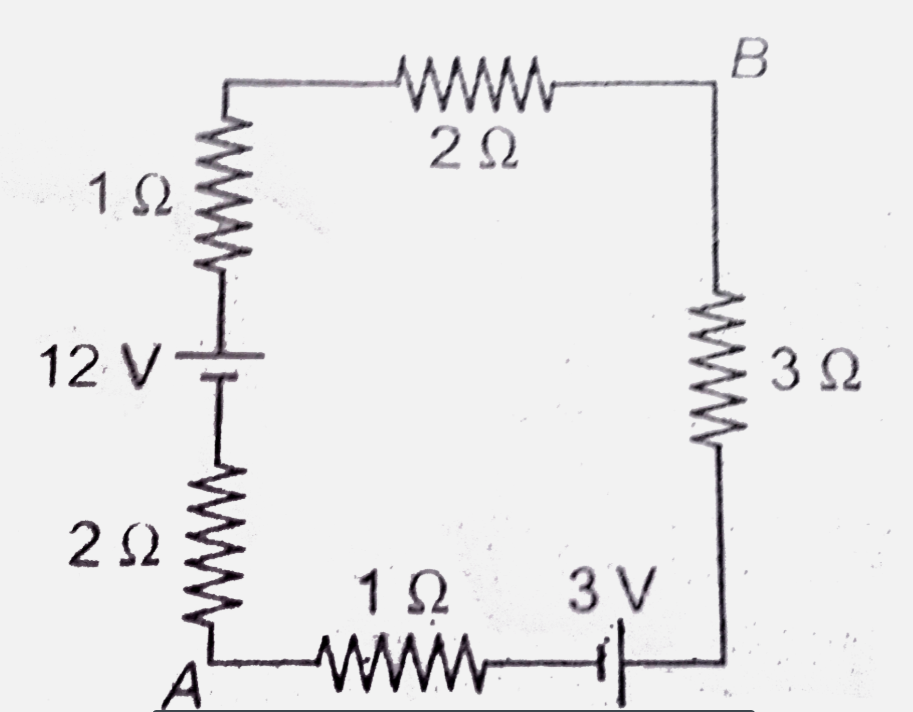 View Solution
View SolutionIn the circuit shown , what is the potential difference VPQ?
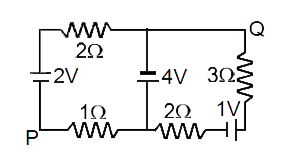 View Solution
View SolutionIn the circuit shown in the figure, the ratio of VB as VC is
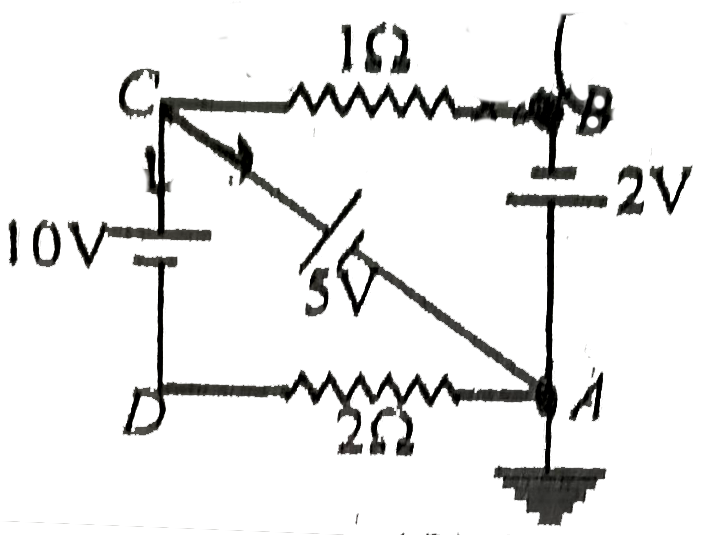 View Solution
View SolutionIn the circuit shown, what is the potential different VPQ ?
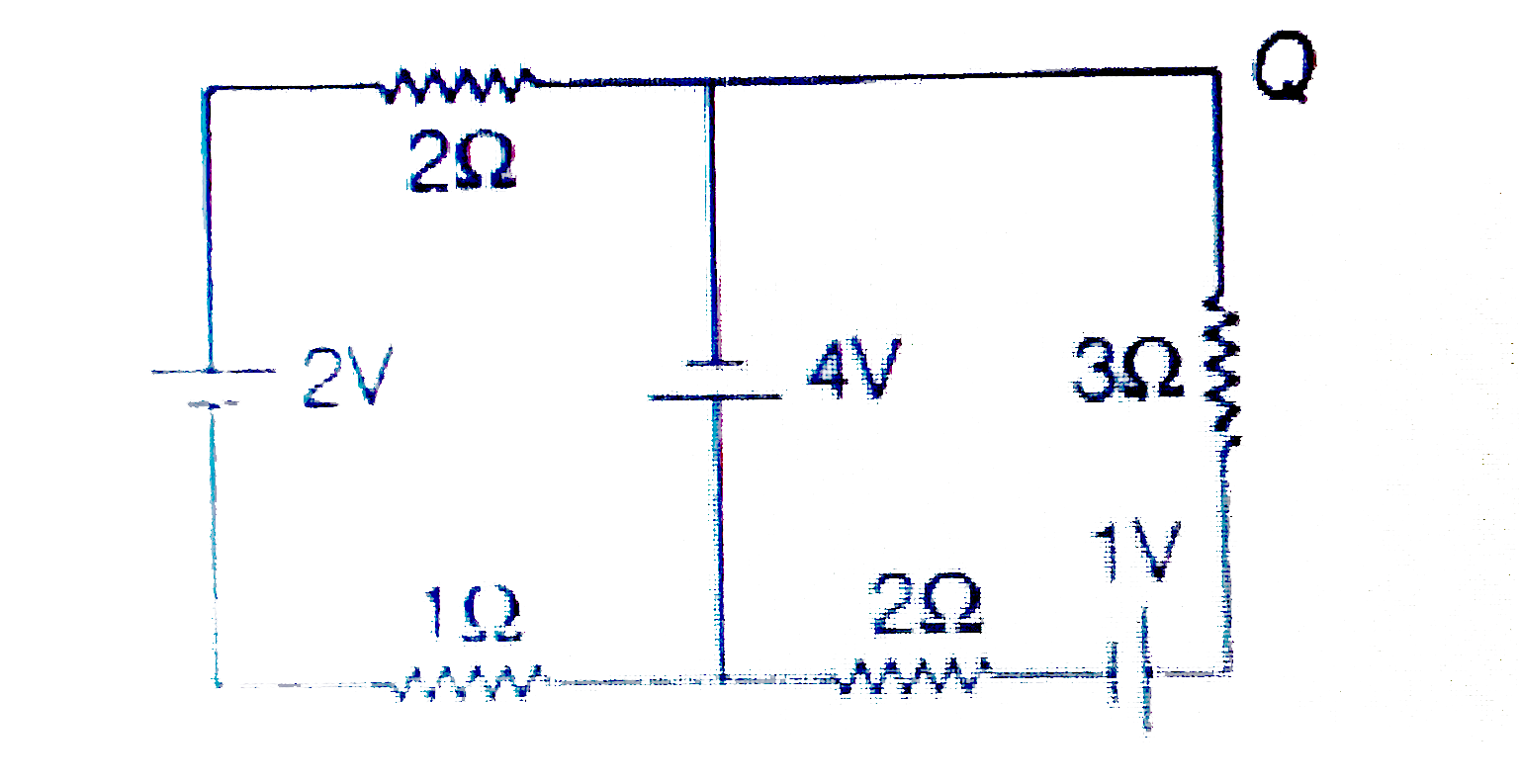 View Solution
View SolutionThree block 1, 2 and 3 are arranged as shown in the figure. The velocities of the blockes v1 , v2 and v3 are shown in the figure. What is the relationship between v1 , v2 and v3 ?
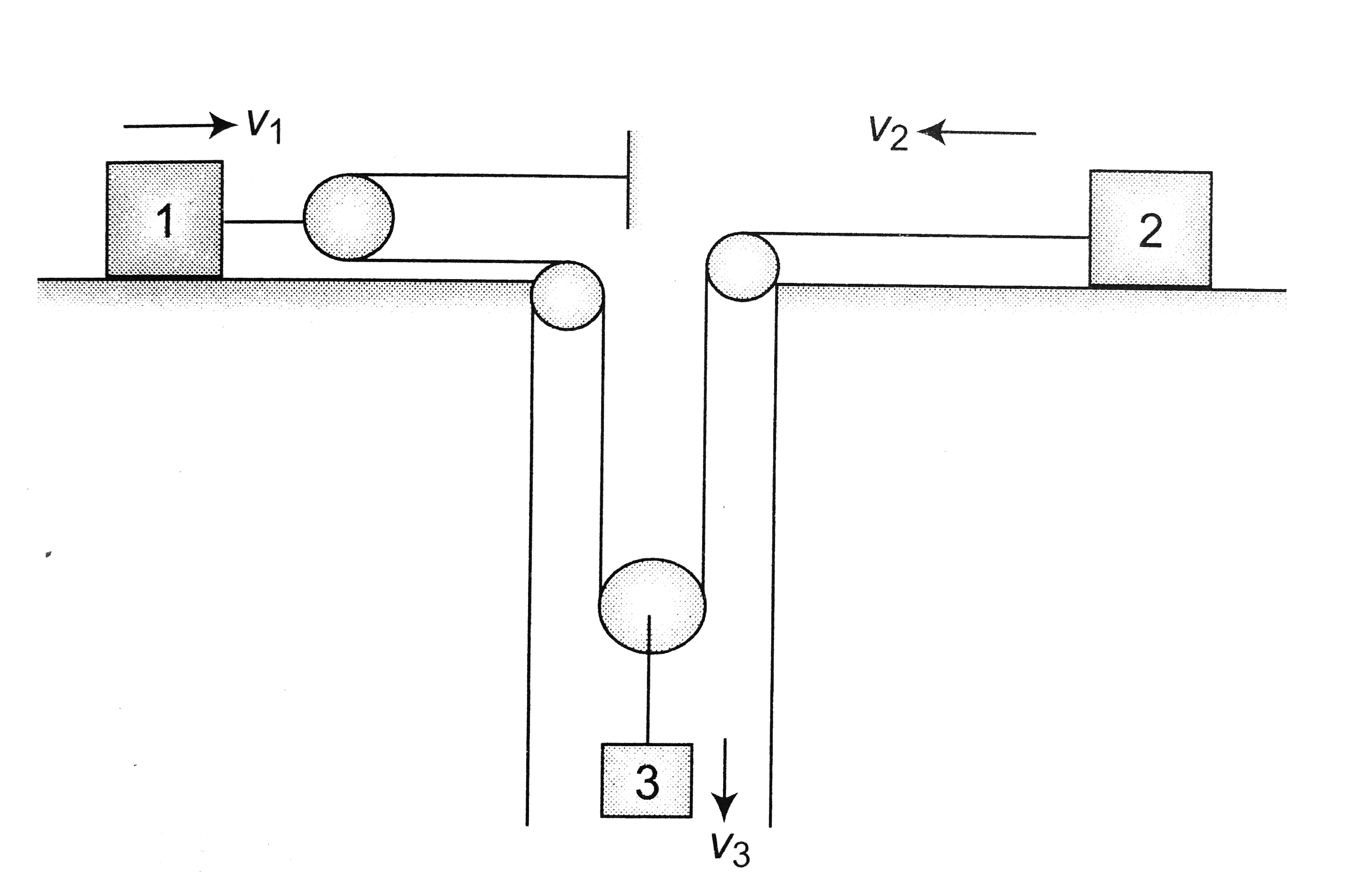 View Solution
View Solution



